To reach the Starting point of the Trek
For the combing Dudh Kunda Lake and Pikey Peak Trek, there are both road and airport accessible starting and ending points, so you can choose either a flight or a vehicle for your journey. Road transport is highly recommended over flights because flights are not regular and often experience delays due to weather conditions. Therefore, the transport options for the Dudh Kunda - Pikey Peak Trek are generally straightforward, but due to the remote nature of the area and variable weather conditions, planning and flexibility are important for a smooth travel experience.
Transportation for the Dudh Kunda Pikey Peak Trek typically involves the following and costs:
- From Kathmandu to Phaplu/Salleri and Back:
Private Vehicle: A comfortable option for groups, offering more flexibility and a direct route.
- Costs: USD 330, Kathmandu to Pattale Dhap
- Costs: USD 350, Phaplu to Kathmandu
Public Vehicle: More economical but can be less comfortable. Public vehicles often leave from Kathmandu’s bus parks (Chabahil) and may take longer due to frequent stops.
- Costs: USD 20 per person, Kathmandu to Pattale Dhap
- Costs: USD 25 per person, Phaplu to Kathmandu
- Travel Duration: Approximately 8-10 hours by road.
- Road distance: Approximately 267.0 km to Pattale Dhap and 297.0 Km to Phaplu
- Road Conditions: The drive involves traveling on hilly and winding roads, with some narrow and zigzag sections, so it's important to be prepared for a long and potentially bumpy journey.
Flight to Phaplu from Kathmandu and back:
- Airline:Tara Air or Sita Air (from Kathmandu and back)
- Duration:Approximately 30-40 minutes
- Flight Time:Flights are not daily and depend on the number of passengers, with weather permitting. Some time can delays or cancellations can occur. It's recommended to allow extra time for potential delays.
- Flight cost:The cost is US$ 200 per person for one way.
Best time to Visit Dudh Kunda Pikey Trek
The best time to visit the Dudh Kunda Pikey Peak trek is during the two main trekking seasons namely spring and autumn season in Nepal. These two seasons offer the most favorable weather and spectacular views, making your trekking experience enjoyable and memorable.
- Spring season (March to May):
Spring is measured the best time for the Dudh Kunda Pikey Peak Trek. During this season, the weather is generally stable, with mild temperatures during the day and clear skies, providing excellent visibility of the surrounding mountains. The trekking trail is decorated with vibrant rhododendron blooms, creating a colorful and picturesque landscape. The temperatures are pleasant, making it a comfortable time for hiking and the days are longer, allowing for more exploration.
- Autumn season (September to November):
Autumn is another popular and recommended season for the Dudh Kunda Pikey Peak Trek. The weather will be dry, and the skies are generally clear, offering breathtaking views of the Himalayan peaks. The temperatures are moderate, and the conditions are favorable for hiking. Autumn is also known as the post-monsoon season, so the air is crisp and clean after the rains, providing stunning vistas of the surrounding mountains and landscapes.
- Summer & winter season (July to August & Nov to Feb)
Dudh Kunda Pikey peak trek is possible during the summer and winter seasons but it can be more challenging compared to the preferred trekking seasons of spring and autumn. Summer is not the most recommended time due to the challenging weather conditions and potential risks involved. Winter season can be suitable for experienced trekkers but you have to prepare for the cold conditions and have the appropriate gear and equipment.
However, the weather and trail conditions may not be as favorable and you may encounter more challenges, such as rain and snow during the winter months (December to February) or the possibility of monsoon rains and leeches during the summer months (June to August).
Dudh Kunda Pikey Peak Trek Difficulty
The difficulty level of the Dudh Kunda Pikey Peak Trek is considered a moderate level trek in terms of difficulty. It requires good physical fitness, good health condition, and previous trekking experience and has to be able to walk 5-8 hours a day.
Pikey Peak stands at around 4065 meters and Dudh Kunda Lake situated at around 4,600 meters above sea level. It is not a challenging trekking route compared with other trekking routes but altitude sickness is potential anxiety to all trekkers to reach the both places. You have to walk uphill and downhill in the higher elevation, which makes it tough to walk.
The trekking trails are unfamiliar in the forest and village which makes it difficult to find the right trail in a few places. Solo trekking is not recommended for this route due to the lack of location of route and lodge for accommodations throughout the journey. As a result, trekkers should be prepared to rely on a combination of lodges and camping for their accommodation needs. The trek takes you through remote areas with limited facilities and services. It's crucial to be self-sufficient and carry essential supplies, including water and snacks.
The walking distance also depends on your fitness level, the terrain, elevations and destination. Normally the walking hours range is 5 to 8 hours a day during the Dudh Kunda Pikey Peak Trek. Anyway our guide manages the tea-house and tent for accommodation, resting place of rest, acclimatization day to manage high altitude, slow walk, and short easy steps to complete the trip without any stress.
Acclimatization days during the Trek:
When traveling to higher elevations in the Himalayan region, high altitude sickness is a common issue, and acclimatization is essential, as is the case for the Dudh Kunda Pikey Peak Trek. Although symptoms can develop fairly quickly, trekkers can manage them with proper precautions. Prior high-altitude trekking experience is beneficial, but if you don't have it, you should take extra precautions to avoid altitude sickness when trekking above 3,000 meters
To avoid altitude sickness while trekking in Nepal and on the Dudh Kunda Pikey Peak Trek, walk at your own pace, drink plenty of water, abstain from alcohol, ascend gradually, and sleep at lower elevations. You should also spend two nights at each 500-meter increment above 3,500 meters.
All of our trekking routes are adaptable and include acclimatization days to ensure your health and safety throughout the trek. However, the Dudh Kunda Pikey Peak Trek does not have designated acclimatization days because it starts from lower elevations and gradually ascends through green forests, allowing trekkers to acclimatize naturally during the journey.
In case of serious issues, we provide essential medications and support for emergency rescue. It is crucial to inform your guide or leader about your health status daily. Based on their assessment, they will determine whether it is safe for you to continue with the trek.
Accommodation during the Dudh Kunda Pikey Trek
Accommodation options along the Dudh Kunda Pikey Peak Trekking route are generally basic but comfortable teahouses, except at Dudh Kunda Lake. At Dudh Kunda Lake, accommodation is more basic, such as homestays. In other areas, there are sufficient accommodations; however, during peak season, finding a place to stay can be challenging. Guides can manage this by making advance bookings via phone calls.
Normally, lodges offer basic private accommodation (typically with 2 beds per room) for twin-sharing, equipped with beds, blankets, and pillows. The bathrooms are commonly shared indoor facilities with squat and western toilets, and sometimes hot showers are available, often using solar power or a gas geyser for an additional charge. Every lodge has a communal dining area with a heater, where trekkers can eat, relax, and socialize with others.
However, the cost of a hot shower will be high, ranging from 200 to 500 NPR per shower, especially at higher altitudes where heating water is more challenging due to the cold temperatures.
Food in Dudh Kunda Pikey Peak Trek
During the Dudh Kunda Lake and Pikey Peak Trekking, food options primarily consist of local Nepali and Sherpa dishes, with some basic Western options available in more popular areas. Every teahouse has a food menu, and the food items are almost the same at every teahouse in each location. You can choose food from the menu based on your requirements. Most teahouses grow fresh vegetables in their gardens and serve them to customers, especially except the Pikey Peak Base Camp and Dudh Kunda Lake.
The cooks are generally trained, often hired from more urban areas, but the taste of the food might differ from Western cuisine. It is advisable to eat vegetarian during the journey because it can be difficult to obtain fresh meat due to the remote location and the less popularity route.
Local Nepali and Sherpa food:
- Dal Bhat:A staple dish served to accompany, consisting of rice served with lentil soup (dal), seasonal vegetables, and pickle.
- Momos:Steamed or fried dumplings filled with vegetables, tuna fish, cheese, eggs, potatoes, or a mix, served with dipping sauces.
- Thukpa:An energetic noodle soup with vegetables and sometimes eggs, flavored with local spices.
- Tibetan Bread:Flatbread fried or baked, often served with honey jam or butter for breakfast or as a snack.
- Tsampa:Roasted barley flour, eaten as porridge or mixed with butter tea (suja). It looks similar to baby food.
Western and International Options:
- Pasta and Noodles:Available in tea houses, often prepared with local ingredients and sauces.
- Omelets:Commonly served for breakfast with items like omelet, fried, boiled, poached eggs, accompanied by Tibetan bread or toast.
- Potatoes and Vegetables:Sometimes served as standalone dishes or as sides with main meals, featuring various varieties flavored with local spices.
- Others:Soups, Piza, fried items, pancake, and some others
Beverages:
- Hot Drinks:All types of hot drinks such as tea, coffee, hot lemon, lemon ginger honey, and hot chocolate are available throughout the trek, but they are often served without sugar; sugar will be provided separately.
- Soft Drinks:Carbonated beverages like cola and Sprite, as well as bottled water, are available throughout the trek.
Drinking Water in Dudh Kunda Pikey Peak Trek
Safe drinking water is essential during the Dudh Kunda Lake and Pikey Peak Trek, especially since you are coming from a different place and the journey will be long in the Himalayan region. Staying hydrated is vital for completing the journey successfully. It's recommended to consume bottled, boiled, or treated water to prevent waterborne illnesses, digest the food and high altitude sickness. Bottled water is available at teahouses and shops along the route, with prices increasing as altitude rises, typically ranging from NPR 100 to NPR 300 per liter.
It's highly recommended that all trekkers bring a reusable water bottle for refilling from natural water sources. Many natural sources such as streams, rivers, and taps are available along the route, but this water should always be purified before drinking. Methods for purification include water purification tablets, filters, or UV purification. Your guide can also provide information about safe drinking water sources during the Dudh Kunda Pikey Peak trekking.
Electricity and Charging Facilities
Most teahouses along the Dudh Kunda Pikey Peak Trekking trail have electricity, but availability is limited at Pikey Peak Base Camp and Dudh Kunda Lake. Electricity in most areas is often generated by mini hydroelectric power, while solar power is more common in teahouses at Pikey Peak Base Camp and Dudh Kunda Lake. Charging electronic devices like phones and cameras usually incurs an extra cost, typically ranging from 200 to 500 NPR per device for a full charge. During the busy trekking season, charging facilities will be in high demand, so it is highly recommended to bring a power bank to charge your electronic devices.
Communication (mobile & Wi-Fi Network) along the trek
Communication (mobile and Wi-Fi) options along the Dudh Kunda Pikey Peak Trek are generally available with good network coverage, but some remote areas mobile signal may be weak or intermittent signals.
Mobile Network: Mobile network coverage is available in many places along the Dudh Kunda Pikey Peak Trek. It is advisable to carry SIM cards from both major providers (Ncell and Nepal Telecom) to increase the chances of having a signal. You can purchase these SIM cards in Kathmandu. The quality of the mobile network can vary; in some locations, you might get 3G or 4G connectivity, while in others, you might only have 2G or no signal at all.
Wi-Fi Network: Most teahouses along the Dudh Kunda Pikey Peak Trek offer Wi-Fi for an additional cost. However, the connection can be slow and may not always be available due to weather conditions or technical issues. Therefore, we highly recommend not relying on Wi-Fi to regularly connect with your family and friends. If you have an emergency and need to contact your family, our guide will assist you in managing the connection by mobile network.
Tipping information
The trekking and climbing guide, as well as the porter, is essential to the success of the trip, ensuring that it is completed smoothly and without issues. Tipping is an important aspect of trekking in Nepal, as it acknowledges and appreciates the hard work of the local staff who assist you throughout your journey. It is customary to tip at the end of the trek, and you should gather all team members (guide, porter, assistant guide) together to distribute the tip. Tips are generally given in cash, preferably in US dollars or Nepalese rupees, and it is best to use small denominations to facilitate easier distribution.
While the typical guideline is to tip around 10% of the total payable amount, you can adjust this based on the quality of service provided. Recommended tipping amounts are as follows:
- Guide: $12-$15 per day
- Climbing Guide: US$ 80 total
- Porter: $8-$10 per day
- Assistant Guide: $8-$12 per day
These tips are highly recommended to motivate the team and reward them for their outstanding service, contributing to a memorable and inspiring experience.
Required packing list for Dudh Kunda Pikey Trek
Travel equipment is essential to pack before your trip. Below is the recommended packing list. We understand it may seem like a lot to carry from home, so we suggest packing light and bringing only the necessary items. If you’re missing something, you can hire or buy it in Kathmandu, especially around Thamel.
These general items are suitable for all seasons while trekking in Nepal, but the list may vary depending on the season and the duration of your chosen trek. It is highly recommended to choose lightweight and multi-functional gear and to minimize unnecessary items. This approach will help reduce the weight of your pack and make your trekking experience more comfortable. Therefore, it’s important to ask your trekking organizer for a detailed packing list specific to your trek. They will provide you with clear information about what to bring.
Requirement Documents for Dudh Kunda Pikey Peak Trek:
- Passport and 4 passport size photos
- Travel insurance details (in case an emergency evacuation if needed)
- Boarding passes for flights
- Driver’s license (if needed)
- Cash USD
- Credit/Debit Card (Ensure you have $500 on your card incase an emergency helicopter evacuation is needed)
Logistic Things for Dudh Kunda Pikey Peak Trek:
- Sleeping bag (Comfort rating -15 Celsius recommended)
- Sleeping bag liner (Optional)
Footwear Things for Dudh Kunda Pikey Peak Trek:
- Trekking boots: one pair lightweight
- Sandals for city and tea house footwear
- Shoes for the plane and tea houses (Optional)
- Gaiters for hiking in winter to the base camp
- Thin, lightweight inner socks
- Thick, warm wool hiking socks
Clothing for body:
Please make sure that you have non-cotton clothing for trekking:
- Base-layer t-shirts (e.g. running t-shirts)
- Fleece/Windproof jacket
- Waterproof jacket
- Down jacket for warmth
- Travel clothes and City Wear
- Underwear
- Base-layer trousers (optional)
- Waterproof trousers
- Trekking trousers
- Trekking shorts (Optional)
- Gloves and wool hat
- Bandanna or scarf
Health Requirements (Basic First Aid Kit)
- First-aid kit; should contain lip salve, Aspirin, Band Aids, anti-histamine, Imodium or similar tablets for mild cases of diarrhea
- Re-hydration powder, extra prescription drugs you may be taking if any particular
- Wet wipes for cleaning can be purchased in Kathmandu
Others Necessary Things:
- Sunglasses and Sun cream
- Towel
- Book (reading and writing materials)
- MP-3 /Music, headphones and ear plug (who know some people on group are snoring) as optional.
- Travel wash
- Hand sanitizer, wet wipes
- A day bag: 35 liters
- A duffel or rucksack with straps to go over your back (Max 12 kg of weight for porters to carry)
- Dry Liner or Dry Bag
- Water bottle/thermos/ camel bag: At least 2 L. Nalgen bottles best.
General Toiletries:
- Toilet papers/ tissue
- Contact lenses, Glasses (if needed)
- 1 medium sized quick drying towel
- Tooth brush/paste (preferably biodegradable)
- Multipurpose soaps (preferably biodegradable)
- Nail clippers
- Face and body moisturizer
- Feminine hygiene products
- Small mirror
- On Personal Hygiene
- Wet wipes (baby wipes)
- Anti-bacterial hands wash
Others (Optional) Things:
- Trekking Poles
- Large plastic bags – for keeping items dry inside your kit / duffel bag
- Travel game i.e. chess, backgammon, and scrabble. (for luxuries)
- Binoculars (for luxuries)
- Trail Map/Guide book (if you are alone)


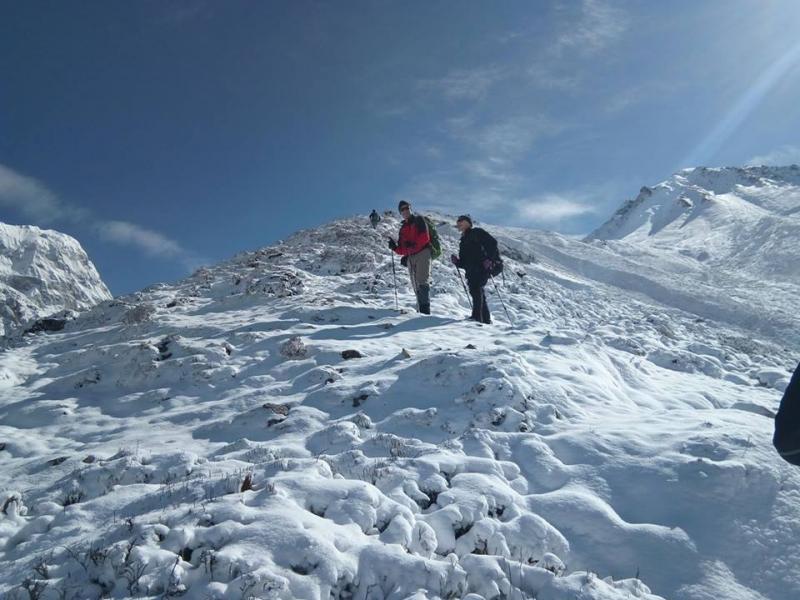

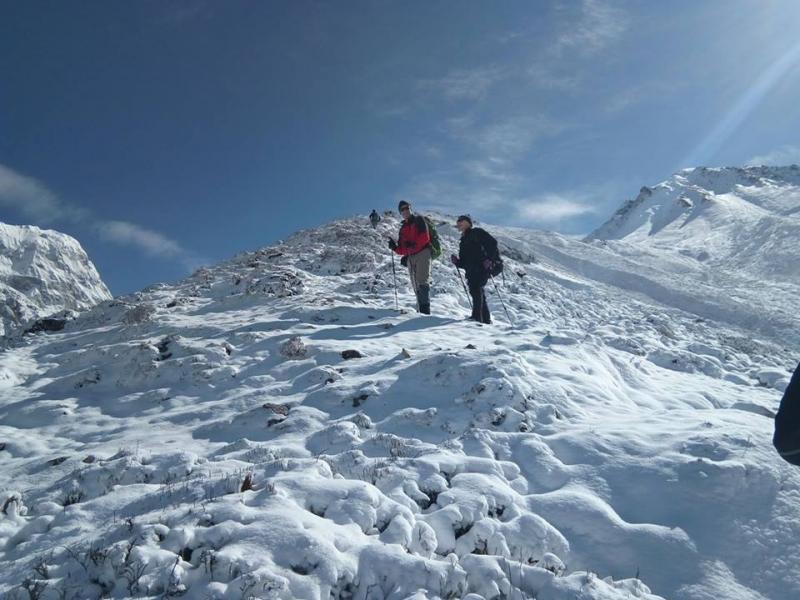
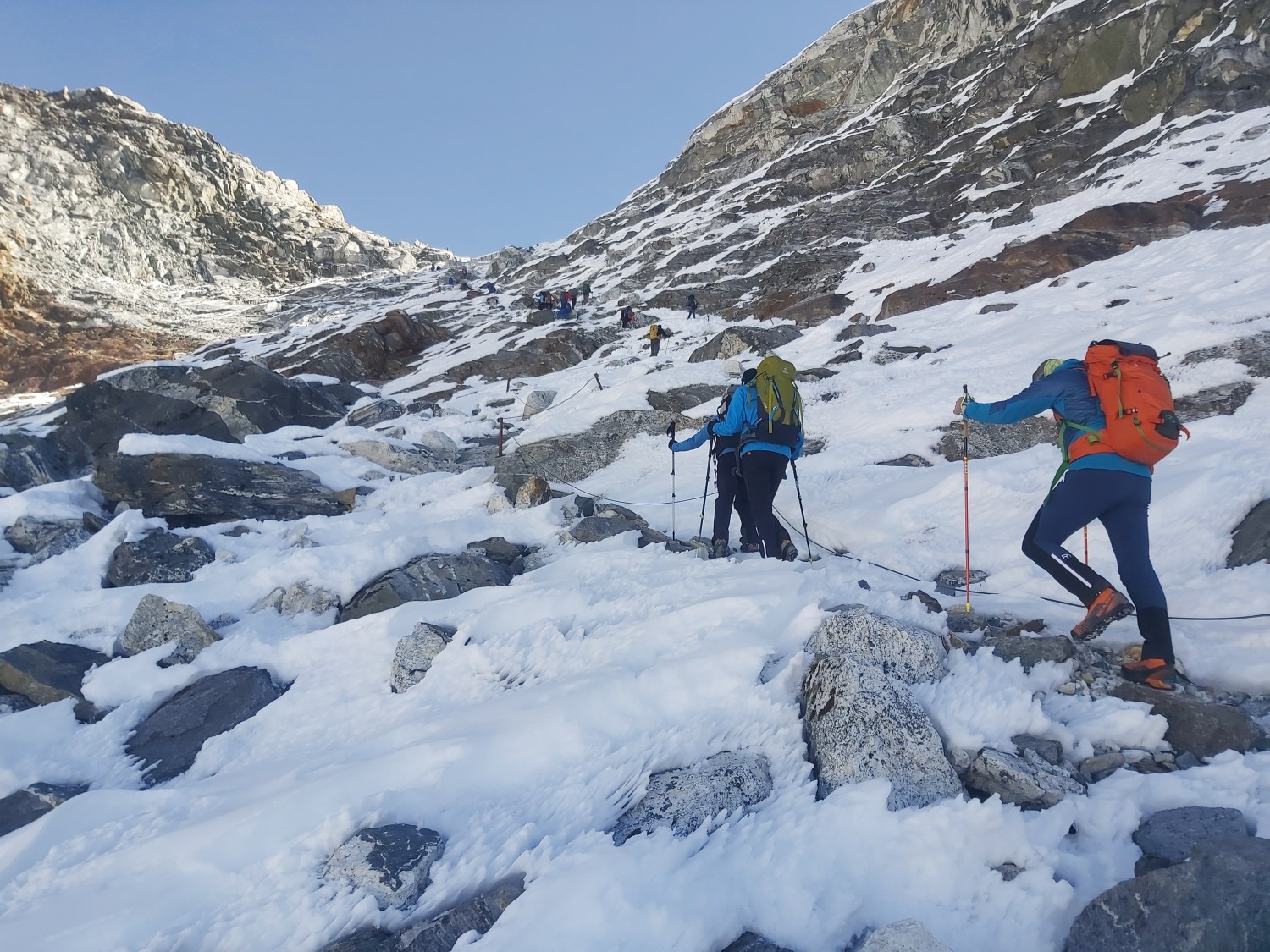
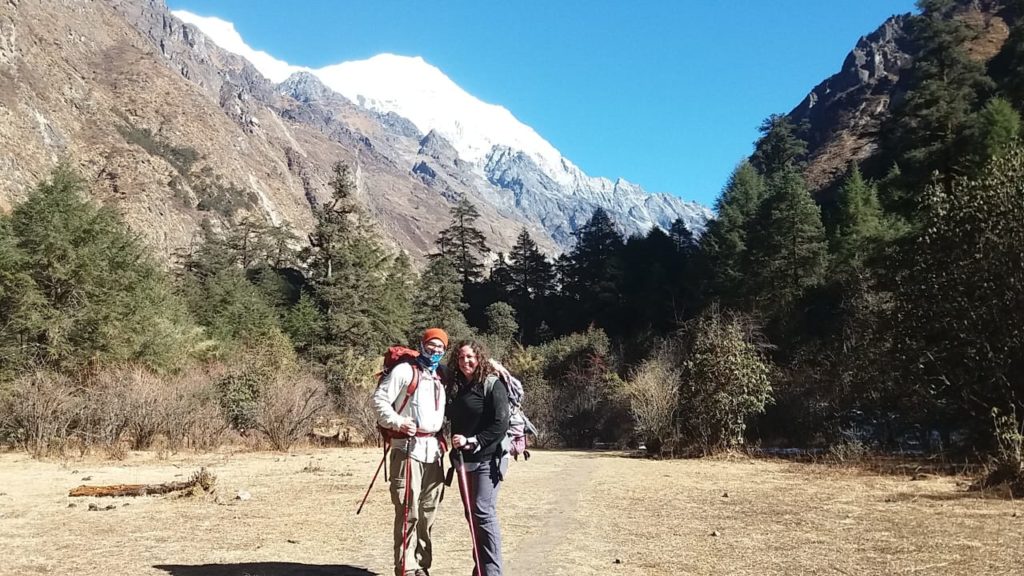



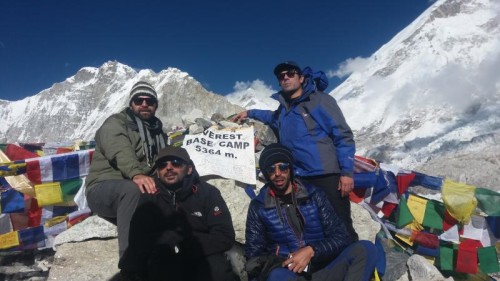
 USD 1325
USD 1325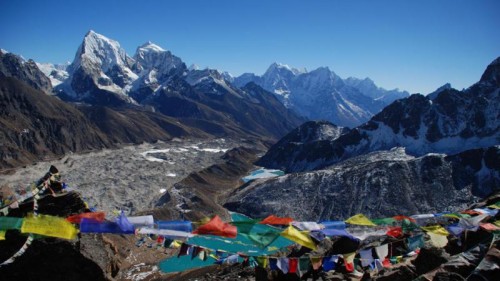
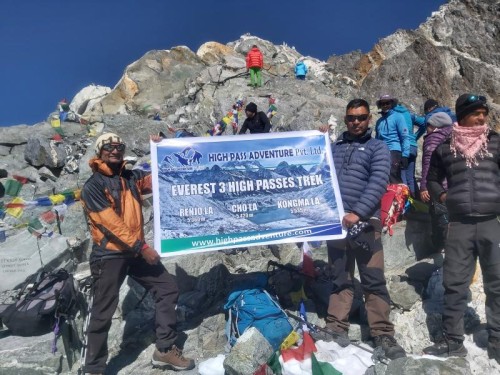
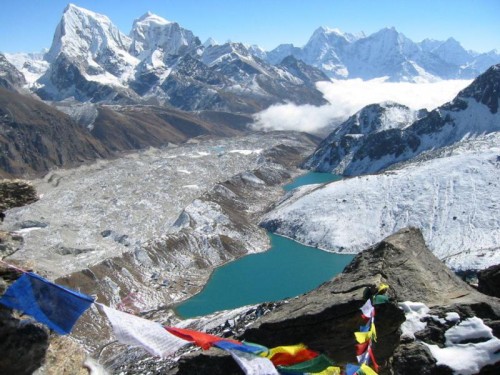
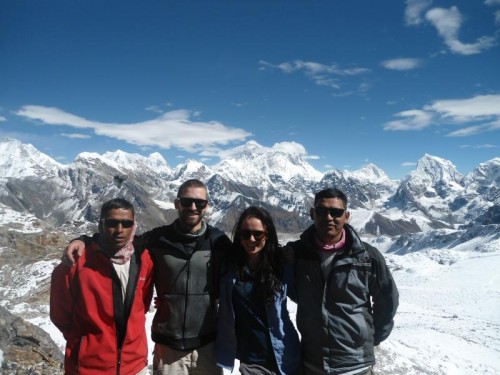

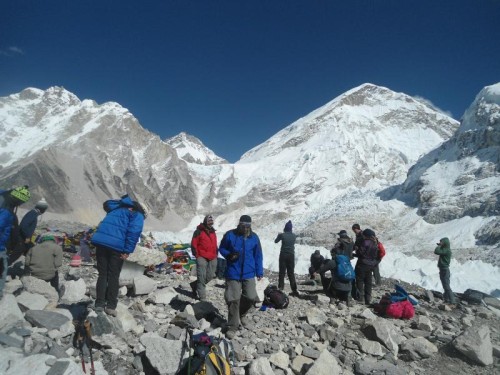
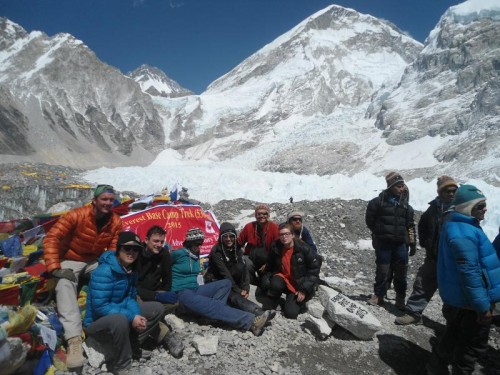

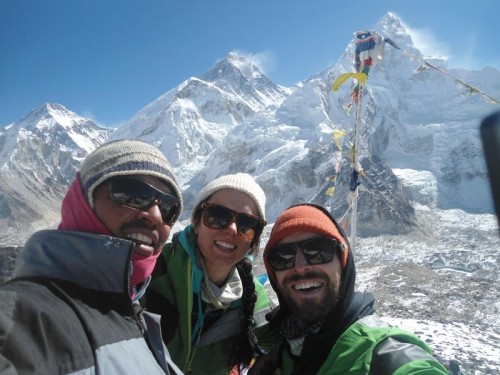
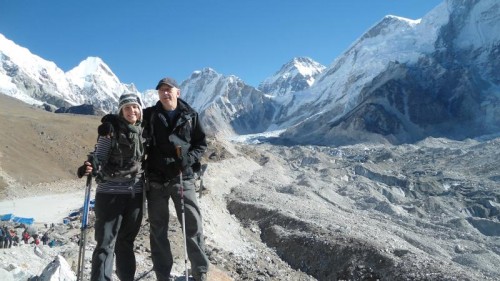
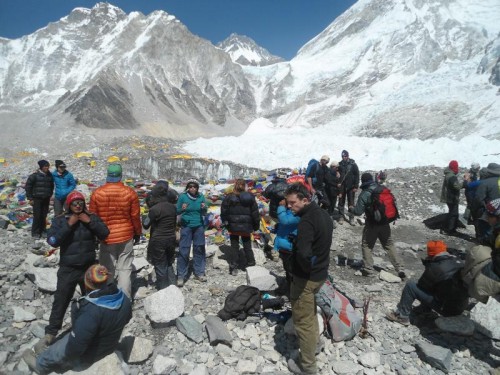


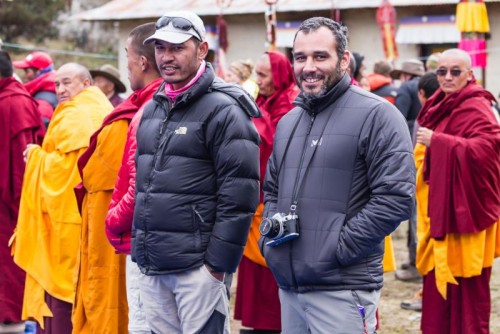
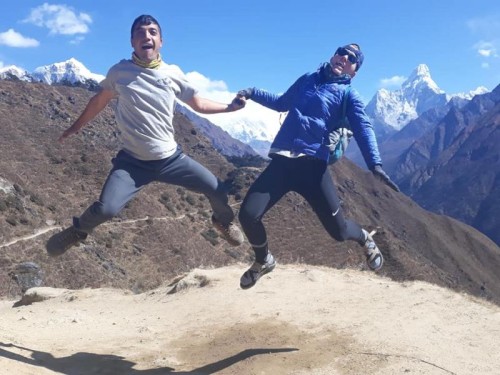

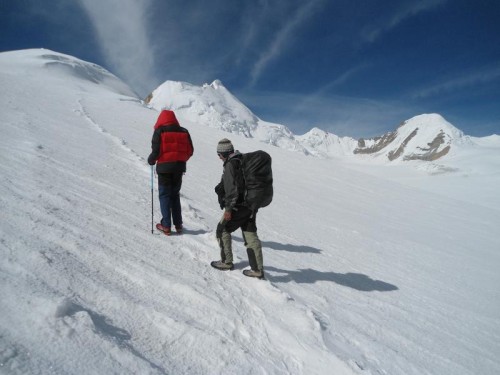
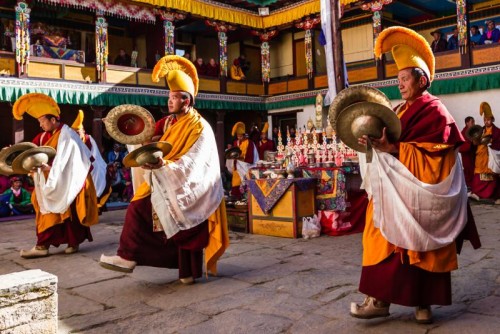
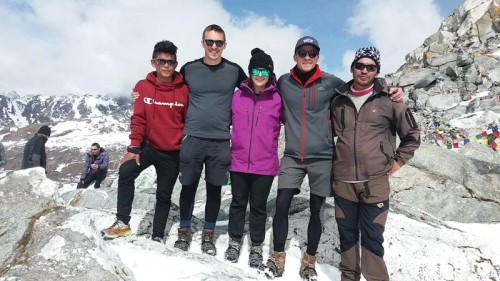

Juleus
United Kingdom
Dudh Kunda Pikey Peak Trekking Experience!!!
27th July, 2023
Trekking to the Dudh Kunda sacred lake via Pikey Peak with guide Ganesh was a wonderful trekking experience. We had chosen High Pass Adventure Trekking Agency to do this trek. The trekking organization was perfect in all senses from beginner to end due to our guide Ganesh professionalism and experience.
The trekking days of 7th and 8th were the best of amazing views and excellent food, crossing beautiful rhododendron and pine until the holy lake, where we had a well-deserved day of rest for the team and an adventurous exploration day for us, the journey was filled with awe-inspiring landscapes and cultural encounters
We strongly recommend High Pass Adventure as your next travel companion.